Costs are falling in the rolled products industry, due to both lower LME prices and weak energy prices. Using CRU's Aluminium Rolling Cost (ARC) model, we have shown that costs fell in 2014 and 2015, with 2016 costs likely to continue their downward movement. However, from 2017 onwards we expect costs to start recovering.
The profitability of an aluminium rolling mill depends greatly on the plant's raw material allocation strategy. Mills typically source a range of raw materials including primary remelt ingot or liquid, rolling slab, hot rolled coil and a variety of different forms of scrap. The scrap generated in-house, termed run-around scrap, is also utilised to minimize costs. Typically, run-around scrap will make up approximately 30-35% of the total raw material mix. Raw material costs represent approximately 65-75% of a rolling mill's total costs, therefore corporate costs are very closely linked to the LME price. This has fallen markedly since 2014 and CRU forecasts the price to weaken further in 2016.
Another important cost component is energy. Rolling mills are currently benefitting from lower energy prices. Following strong increases between 2009 and 2011, average energy costs have stabilised over the past 3 years and cost growth over the forecast will be limited. Some rolled products require more energy than others: for example auto body sheet has to be continuously annealed after the cold rolling stage and end stock requires a coating. Higher value added products in general require more casting, rolling and finishing time which results in a higher energy consumption. Therefore, as more plants move into higher value added products, and away from more standard products, the average energy consumption across the industry will trend upwards.
Aluminium rolled products capacity continues to grow in China. Indeed, CRU expects Chinese cold rolled and plate capacity to double between 2011 and 2016. This expansion would be understandable if the double digit growth in demand seen over the past decade was set to continue. The problem is that demand growth is slowing, and there are real risks to demand falling even more than we currently expect. Over the same time period CRU only expects a 13% growth in capacity in the World ex. China. The major rollers such as Novelis and Alcoa are investing heavily in automotive finishing capacity. This will ensure strong margins going forward.
The product mix at a rolling mill influences both capacity and costs. A recent trend witnessed, particularly in North America and Europe, is the commitment of most major rollers to switch production to automotive sheet. Typically, this will be at the expense of another product, as auto sheet tends to require an increase in hot mill time relative to most other products. There have been a number of announcements regarding investments by producers in additional capacity for both auto body and auto structural sheet.
The largest increase in production of automotive sheet in North America is expected to occur at Novelis' Oswego mill in New York State. The company's 240,000 tpy expansion at Oswego came on stream in late 2013 and has already significantly boosted automotive capacity as well as displacing can sheet in the product mix. Alcoa has also made major inroads into the automotive sheet market through a $275m capacity conversion and expansion at its Alcoa, Tennessee mill, and a $300m expansion at its Davenport, Iowa facility. Both investments are aimed at increasing the company's automotive sheet capacity, and CRU estimates that combined production of automotive sheet at these two Alcoa plants alone will make up approximately 48% of the total automotive sheet produced in the region in 2020.
In Europe, a number of companies have added new rolling mills to their existing plants in order to increase automotive capacity. AMAG has invested €220m to increase capacity at its Ranshofen plant in Austria, commissioning a new hot mill in 2014. The company has also announced that it will be upgrading equipment and investing €300m in a new cold rolling mill, which is set to come on stream in 2017. In addition, Aleris has completed a $70m expansion at its Duffel mill in Belgium, adding a new cold rolling mill in order to increase its automotive sheet capacity.
Novelis has converted some capacity at its Göttingen mill to produce automotive sheet, which came on stream in 2013, while Norsk Hydro recently completed the construction of a new automotive sheet finishing line at Grevenbroich. Constellium announced in 2014 that it is investing up to €200m over the next three years to increase its production capacity of automotive sheet in Europe, including expanding its facility at Neuf Brisach.
Overcapacity is the big problem in China. Multiple new players are building advanced mills, which will lead to an oversupplied Chinese domestic market for common alloy products, as well as can stock and other high value added sheet and plate products. This will encourage Chinese mills to look 2013 and 2020 net exports will increase by 285%. The majority of this will be in the form of common alloy and foil stock, however a growing percentage will be made up of higher value added products such as can sheet and automotive sheet. Utilisation rates in China have fallen to as low as 64% in 2015 and little improvement is expected over the forecast. Indeed CRU expects operating rates in China to remain below 68% through to 2020. Conversion fees have been falling across the majority of products in China. However, operating costs have also been coming down. The average conversion cost over ingot of producing 1xxx series standard coil is expected to fall by roughly 9% in China between 2013 and 2016.
The data and expert analysis presented here is drawn from the 2015 issue of CRU's Aluminium Rolled Products Cost Service.
Read the full story for FREE
Also unlock other exclusive content
 Events
Events
 e-Magazines
e-Magazines
 Reports
Reports


 Events
Events
 e-Magazines
e-Magazines
 Reports
Reports









